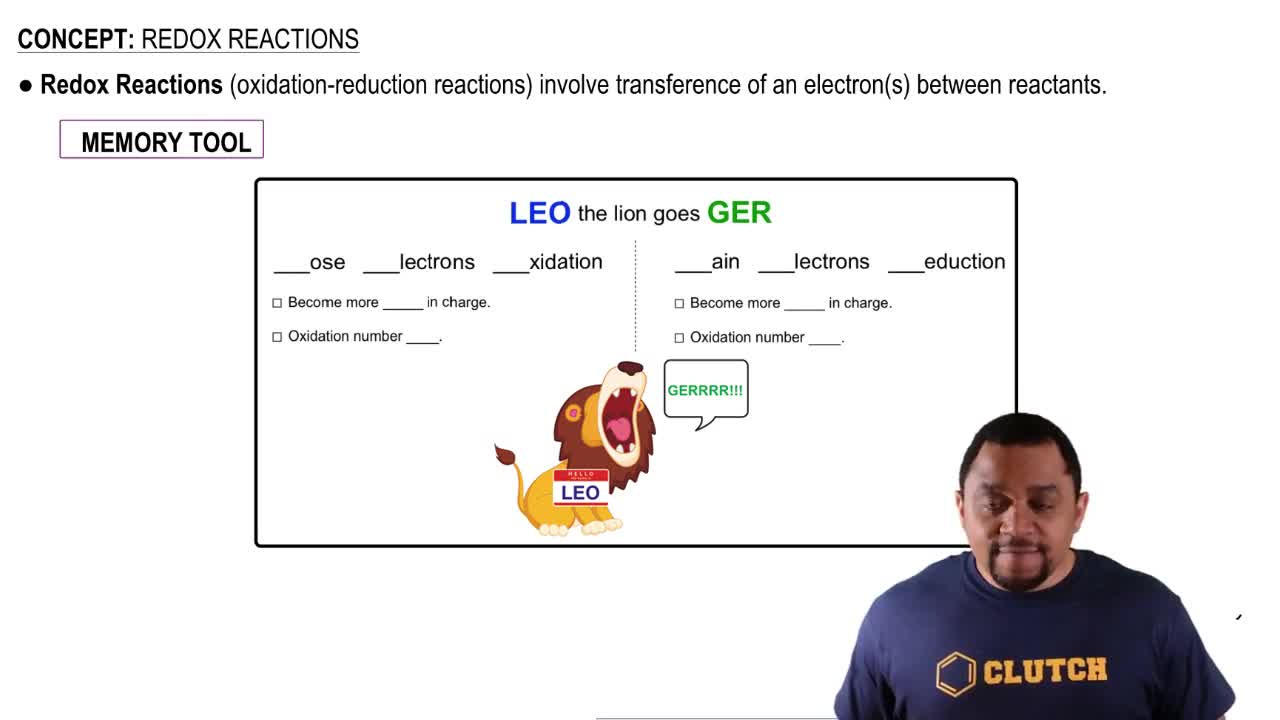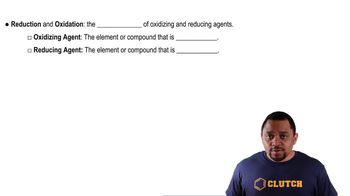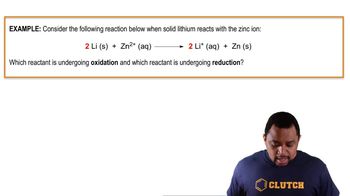16. Oxidation and Reduction
Redox Reactions
16. Oxidation and Reduction
Redox Reactions
Practice this topic
- Multiple Choice
Which element is being reduced in the following reaction?
Cr2O72- + 3 HNO2 + 5 H+ → 2 Cr3+ + 3NO3- + 4 H2O
- Multiple Choice
Identify the oxidizing agent and reducing agent from the following redox reaction.
Ba (s) + Cl2 (g) → BaCl2 (aq)
- Multiple Choice
Which element is oxidized and which is reduced in the following reaction?
Hg (aq) + HgCl2 (aq) → Hg2Cl2
- Multiple Choice
Which of the following represents an oxidation-reduction reaction?
I. PCl3 (aq) + Cl2 (g) → PCl5 (aq)
II. 2 AgNO3 (aq) + Cu (s) → Cu(NO3)2 (aq) + 2 Ag (s)
III. CO2 (g) + 2 LiOH (aq) → Li2CO3 (aq) + H2O (l)
IV. FeCl2 (aq) + 2 NaOH (aq) → Fe(OH)2 (aq) + 2 NaCl (aq)
- Open QuestionIdentify the oxidized reactant, the reduced reactant, the oxidizing agent, and the reducing agent in the following reactions:a. Fe(s)+Cu₂+(aq) → Fe₂+(aq)+Cu(s) b. Mg(s)+Cl₂(g) → MgCl₂(s)c. 2 Al(s)+Cr₂O₃(s) → 2 Cr(s) + Al₂O₃(s)
- Open QuestionPotassium, a silvery metal, reacts with bromine, a corrosive, reddish liquid, to yield potassium bromide, a white solid. Write the balanced equation, and identify the oxidizing and reducing agents.
- Open QuestionIn each of the following, tell whether the substance gains electrons or loses electrons in a redox reaction:a. An oxidizing agentb. A reducing agentc. A substance undergoing oxidationd. A substance undergoing reduction



